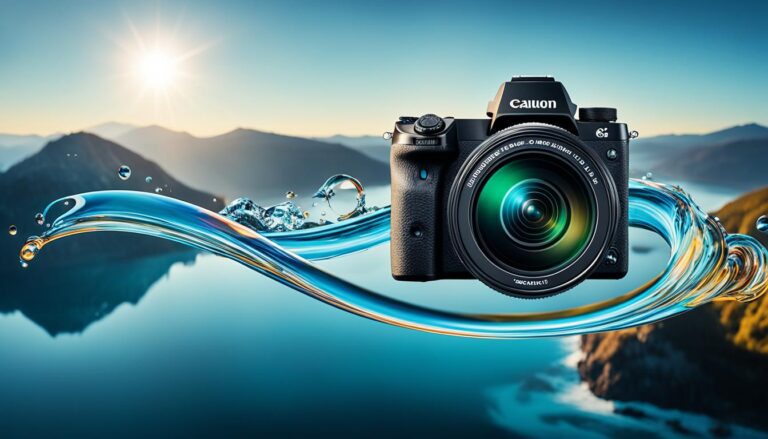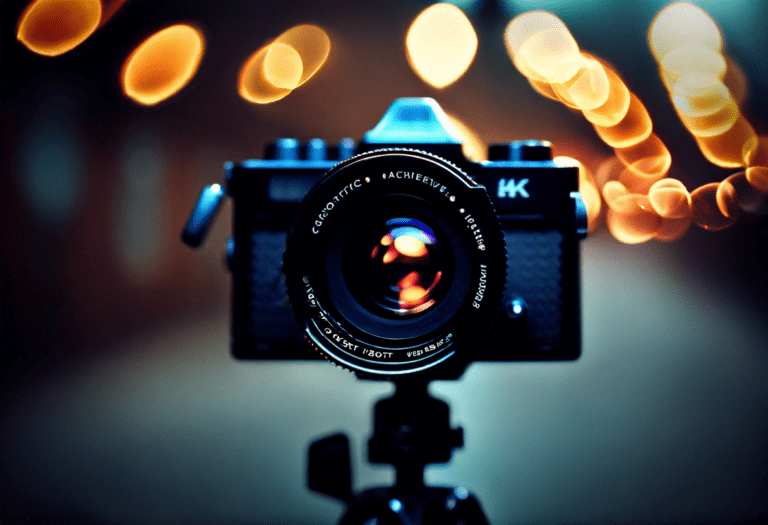How To Create Compelling Hdr Images?
Understanding the Basics of HDR Photography
Creating compelling HDR images requires a solid understanding of the basics of High Dynamic Range (HDR) photography. HDR imaging involves capturing a wider range of exposure levels in a single image, resulting in stunning photographs that showcase a more extensive range of tones and details. To create striking HDR images, photographers blend multiple exposures of the same scene to overcome the limitations of standard photography.
The key to successful HDR photography lies in capturing a series of images at varying exposures. Typically, a photographer will take three or more shots of the same scene: one underexposed to capture highlights, one correctly exposed for mid-tones, and one overexposed to retain shadow details. These multiple exposures are then merged using specialized software to create a single HDR image with enhanced dynamic range.
HDR photography is particularly useful in high-contrast scenes where the camera struggles to capture details in both shadowy and bright areas. By merging multiple exposures, photographers can reveal intricate details, vibrant colors, and textures that may be lost in a single standard photograph. Understanding how to balance exposure levels and merge images effectively is essential for creating compelling HDR images that stand out.
In addition to exposure blending, tone mapping plays a crucial role in HDR photography. Tone mapping techniques allow photographers to adjust the contrast, brightness, and overall look of the final HDR image. Through tone mapping, photographers can enhance details, bring out textures, and create a more visually appealing photograph. Experimenting with different tone mapping settings can help photographers achieve the desired effect and style in their HDR images.
Mastering the basics of HDR photography, including exposure blending and tone mapping, is fundamental to creating compelling HDR images. By understanding the principles behind HDR imaging and practicing with different techniques, photographers can elevate their photos to new heights and capture stunning, true-to-life scenes with enhanced dynamic range and visual impact.
Selecting the Right Equipment for Creating HDR Images
When venturing into the world of High Dynamic Range (HDR) photography, having the right equipment can significantly impact the quality of your images. Here are some essential tools you should consider to create compelling HDR images:
1. Camera:
Investing in a DSLR or mirrorless camera with manual settings will give you more control over exposure and settings. Look for a camera with bracketing capabilities to capture multiple exposures easily.
2. Tripod:
A sturdy tripod is crucial for HDR photography as it ensures your camera remains steady during the multiple exposures. This helps maintain alignment across all frames, reducing the risk of blurry images.
3. Remote Shutter Release:
A remote shutter release or cable release allows you to trigger the camera without physically touching it, further minimizing the chances of introducing camera shake.
4. Wide-Angle Lens:
A wide-angle lens enables you to capture expansive landscapes or interiors with a broader field of view. This type of lens is popular among HDR photographers for its ability to capture more details in a single frame.
5. Neutral Density Filters:
Neutral density filters help control the amount of light entering the lens, allowing you to shoot long exposures even in bright conditions. This can be beneficial when capturing scenes with high contrast.
6. HDR Software:
Choosing the right post-processing software is essential for blending multiple exposures seamlessly. Popular options include Adobe Photoshop, Lightroom, Photomatix Pro, and Aurora HDR, each offering various tools for merging and enhancing HDR images.
By selecting the appropriate equipment for creating HDR images, you can elevate your photography skills and produce captivating visuals with enhanced dynamic range and vibrant colors. Remember, while gear is essential, mastering the techniques and artistic aspects of HDR photography will ultimately define the success of your images.
Tips for Capturing Stunning HDR Photos
High Dynamic Range (HDR) photography is a technique used to capture a broader range of luminosity levels than traditional photography. To create compelling HDR images, follow these tips to enhance your skills and achieve stunning results.
-
Use a Tripod: Stability is key in HDR photography to ensure your images align perfectly during the post-processing phase. A sturdy tripod helps maintain consistency across multiple exposures.
-
Bracketing Mode: Most cameras offer a bracketing feature that automatically captures a series of exposures at different brightness levels. This simplifies the process of capturing images with varying exposures for later blending in post-processing.
-
Select the Right Scene: Choose scenes with a high contrast range to make the most of HDR photography. Scenes with deep shadows and bright highlights provide the necessary dynamic range for visually striking results.
-
Avoid Overprocessing: While HDR images are known for their vibrant colors and enhanced details, it’s crucial to maintain a balanced and natural look. Overprocessing can lead to unrealistic images that appear artificial.
-
Experiment with Different Software: Explore various HDR software options to find one that suits your preferences. Software like Adobe Photoshop, Aurora HDR, and Photomatix Pro offer tools for merging and fine-tuning HDR images.
-
Focus on Composition: Composition plays a vital role in creating impactful HDR images. Pay attention to leading lines, symmetry, and focal points to draw viewers into your photographs.
-
Shoot in RAW: Shooting in RAW format preserves more image data, allowing for greater flexibility in post-processing. RAW files retain details that can be crucial in producing high-quality HDR images.
-
Adjust White Balance: Correct white balance settings ensure accurate colors in your HDR images. Experiment with different white balance presets or manually adjust the temperature to achieve the desired look.
-
Refine HDR Settings: Understand the settings in your HDR software to control factors like saturation, contrast, and exposure. Fine-tune these parameters to achieve a balance that enhances your images without being overpowering.
-
Practice Patience and Persistence: Mastering HDR photography takes time and practice. Experiment with different techniques, scenes, and lighting conditions to develop your unique style and create visually compelling HDR images.
By applying these tips and techniques, you can elevate your HDR photography skills and capture stunning images that showcase the beauty of high dynamic range scenes. Experiment, refine, and enjoy the process of creating compelling HDR visuals that leave a lasting impression on viewers.
Understanding the Basics of HDR Photography
High Dynamic Range (HDR) imaging is a technique used in photography to capture a broader range of light and detail in a scene than is possible with a single exposure. By blending multiple shots taken at different exposures, HDR creates visually stunning images that showcase rich colors, sharp details, and balanced lighting.
Selecting the Right Equipment for Creating HDR Images
To create compelling HDR images, it is essential to have the right equipment that will allow you to capture a wide range of light values. When choosing a camera for HDR photography, opt for one with auto-bracketing feature, which automatically takes multiple shots at varying exposures. Additionally, a sturdy tripod is crucial to keep your camera stable during the bracketing process, ensuring alignment in post-processing.
Tips for Capturing Stunning HDR Photos
When shooting HDR images, keep in mind the importance of composition and lighting. To achieve captivating HDR photos, consider the following tips:
- Choose a captivating subject with a wide dynamic range of light.
- Use a tripod to avoid camera shake and ensure sharp images.
- Experiment with different exposure settings to capture a range of highlights and shadows.
- Incorporate leading lines or strong foreground elements to add depth to your compositions.
- Avoid overprocessing your HDR images to maintain a natural look.
Post-Processing Techniques to Enhance HDR Images
In post-processing, enhancing HDR images involves merging multiple exposures and fine-tuning the final result. Utilize specialized HDR software like Adobe Lightroom or Photomatix Pro to combine your bracketed shots and adjust settings such as exposure, contrast, and color temperature. Experiment with tone mapping to bring out details in highlights and shadows while maintaining a realistic appearance.
Showcasing Your HDR Photography Portfolio
Once you have created a collection of compelling HDR images, it’s time to showcase your work to the world. Create an online portfolio or website to display your best work, organize your images into categories, and provide context or background information for each photograph. Share your portfolio on social media platforms, photography forums, and with potential clients to gain exposure and recognition for your HDR photography skills. By following these steps and honing your craft, you can create compelling HDR images that captivate viewers and leave a lasting impression.
Showcasing Your HDR Photography Portfolio
For photographers passionate about High Dynamic Range (HDR) images, showcasing their work effectively is crucial to gaining recognition and attracting clients. Building a compelling portfolio requires more than just a collection of images; it demands a thoughtful curation that highlights your skills and artistic vision. Here are some essential tips to help you showcase your HDR photography portfolio successfully.
1. Organize Your Portfolio
Start by organizing your portfolio into coherent categories or themes. This could be based on subjects, locations, or styles. By grouping your HDR images in a structured manner, you can create a more compelling narrative for viewers to engage with.
2. Highlight Your Best Work
Select only your best HDR images for inclusion in your portfolio. Quality always trumps quantity. Take the time to critically evaluate your work and choose photographs that demonstrate your technical proficiency and artistic flair. Remember, each image should be a standout piece that contributes to the overall impact of your portfolio.
3. Tell a Story
A great portfolio goes beyond just displaying images; it tells a story. Consider the flow and arrangement of your photographs to create a visual journey for the viewer. Whether it’s through a series of related images or a cohesive theme running through your portfolio, storytelling can elevate the impact of your work.
4. Optimize for Online Viewing
In today’s digital age, most portfolios are viewed online. Ensure that your website or online portfolio is user-friendly, visually appealing, and easy to navigate. Optimize your images for web viewing to maintain quality while ensuring fast loading times.
5. Seek Feedback
Don’t hesitate to share your portfolio with peers, mentors, or online photography communities to gather constructive feedback. Constructive criticism can help you identify areas for improvement and refine your portfolio further.
6. Promote Your Portfolio
Share your portfolio across different online platforms and social media channels to reach a wider audience. Consider creating a physical portfolio book or participating in photography exhibitions to showcase your HDR images to a broader demographic.
7. Update Regularly
Keep your portfolio fresh and engaging by regularly updating it with new and refined HDR images. Staying active and showcasing your latest work demonstrates growth and dedication to your craft.
By implementing these tips, you can effectively showcase your HDR photography portfolio and leave a lasting impression on viewers and potential clients. Remember, your portfolio is a reflection of your skills, creativity, and unique vision as a photographer.
Conclusion
Mastering the art of creating compelling HDR images requires a deep understanding of the basics of HDR photography. It involves capturing a wider range of luminance levels to produce stunning photos that closely resemble what the human eye sees. By blending multiple exposures, photographers can create images with rich colors, enhanced details, and balanced exposure levels.
Selecting the right equipment for creating HDR images plays a crucial role in achieving professional-looking results. High-quality cameras with manual exposure settings, a sturdy tripod for stability, and a remote shutter release are essential tools for capturing multiple exposures with precision. Additionally, investing in a wide-angle lens can help in capturing expansive scenes with intricate details.
To capture stunning HDR photos, it’s important to pay attention to composition, lighting, and capturing a range of exposures. leading lines, interesting textures, and a strong focal point can enhance the visual impact of your HDR images. Experimenting with different exposure settings and bracketing techniques can help in capturing a series of images that will later be merged into a compelling HDR photograph.
Post-processing techniques play a significant role in enhancing HDR images to bring out their full potential. Software tools like Adobe Lightroom and Photoshop offer a wide range of features such as tone mapping, color adjustments, and noise reduction to refine your HDR photos. Careful editing and attention to detail in post-processing can elevate your images to a professional level, creating impactful visuals that stand out.
Showcasing your HDR photography portfolio is essential to gaining recognition and attracting potential clients. Building a strong online presence through social media platforms, photography websites, and online galleries can help you reach a wider audience and showcase your best work. Participating in photography exhibitions, contests, and workshops can also provide valuable exposure and networking opportunities within the photography community.
Mastering the art of creating compelling HDR images involves a combination of technical knowledge, creativity, and attention to detail. By understanding the basics of HDR photography, selecting the right equipment, capturing stunning photos, enhancing them through post-processing, and showcasing your work effectively, you can create visually striking HDR images that leave a lasting impression on viewers. Embrace the creative possibilities of HDR photography and let your unique vision shine through in every image you create.






